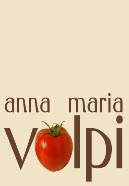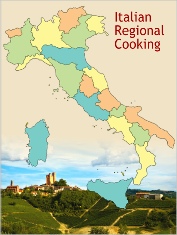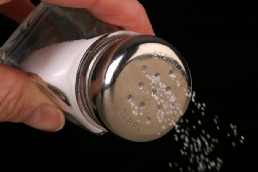









our Italian Cooking
Newsletter

DISCLAIMER and
PRIVACY POLICY
before using
our site
-
Advertise with us
site map
recipes
policies
about us




Extra-
The Best Selection of Italian Extra-
Buy from the source Authentic Aged Traditional Balsamic Vinegar from Italy
Sicily, Apulia, Lazio, Liguria, and More...The Best Selection of Succulent Italian Olives Oil
Infused Extra-
Spice up your dishes with Infused Flavored Italian Extra-
Food Remedies for high blood pressure
by Anna Maria Volpi


Reducing sodium intake is not easy and requires constant attention and a significant effort because sodium is present in food under many different forms. Sodium chloride is salt, used in cooking, at the table, in canning and in preserving. Table salt is 40% of its weight is sodium. Monosodium glutamate or MSG, is a seasoning used in bouillons, in restaurant cooking, and in many packaged foods. Sodium bicarbonate, or baking soda, (and similarly baking powder) is used as a leavener for breads and cakes, sometimes added to vegetables in cooking, and used against indigestion. Sodium nitrite is used in cured meats, salame, and sausages. Many sodium compounds such as sodium sulfite, sodium hydroxide, sodium propionate, etc. are used in industrially processed foods like cheese, breads, cakes, cereals, dried fruits, vegetables, chocolate milks, and ice cream.
Last but not least it is important to implement a low-
* Green leaf vegetables, rich in calcium and magnesium are especially beneficial.
* Whole grains and legumes have high fiber content to lower cholesterol.
* Broccoli and citrus fruit are rich in vitamin C.
* Celery is high in sodium but contains a natural compound by named phthalide with lowering blood pressure capability.
* Onion and garlic (also in the form of supplement) are very beneficial.
* Flaxseed oil, nuts, walnuts, in addition to
* Fish (salmon, tuna, herring and mackerel) are rich in omega 3 fatty acids.
* Refrain from adding salt to homemade dishes. Add herbs and spices as flavor enhancements instead.
* Avoid cooking with bullions.
* And finally if you eat out, talk to the waiter and request for your food to be prepared without salt. Most restaurants will accommodate your needs.
All foods containing saturated fats, like animal products, animal fat, and margarine, are to be avoided.
Also avoid trans-
DISCLAIMER: YOU MUST VERIFY WITH YOUR PHYSICIAN BEFORE APPLYING THIS ARTICLE’S SUGGESTIONS TO YOUR INDIVIDUAL SITUATION.
What’s good and what’s not. If you have high blood pressure, the first thing to do is to
* reduce excess alcohol,
* reduce caffeine, and
* quit smoking,
all habits with a very adverse effect.
To help lower blood pressure you can
* increase consumption of vegetables, better if organically grown.
If you have high blood pressure, foods high in calcium, potassium, magnesium, vitamin C, and omega-
These web pages do NOT provide medical advice. The content displayed is designed to inform. Under no circumstance is it meant to replace the expert care and advice of a qualified physician. The information provided on this site is designed to support, not replace, the relationship that exists between a site visitor and his/her physician. Any proposed step should be discussed with an expert, your doctor or other medical practitioner before being taken. The material on this website was written to provide information only. The information is not designed to take the place of a doctor's instructions. Patients are urged to contact a doctor for specific information regarding guidelines for care. The authors disclaim any responsibility for any adverse effects resulting from the information presented on this website.
Magnesium relaxes blood vessels and allows the blood to flow easier. Foods high in magnesium are chocolate, avocados, spinach, almonds, sunflower seeds, and barley.
Vitamin C seems to expand blood vessels and constricted arteries, consequently helping to lower blood pressure. Red cabbages, red bell peppers, citrus fruits (mandarins, oranges, etc), kiwis, strawberries, and potatoes all are rich in vitamin C.
Omega-
Flaxseed oil seems to inhibit the inflammation that causes artery plaque and poor circulation, thus helping against high blood pressure.
Garlic has been the subject of several clinical studies and its ability to drastically lower blood pressure has been demonstrated.
Important: It is imperative that you consult your doctor before implementing any
changes in your lifestyle or your diet. You should definitely talk to your doctor
before taking any supplements. Some over-
Anna Maria Volpi
© Anna Maria Volpi
previous page | 1 | 2 |
( page 2 of 2 )
If you take any medications, check with your doctor and pharmacist because some drugs, like antacids, have high amounts of sodium. Choose fresh food over frozen or canned food. Stay away from salty foods like anchovies, bacon, bouillons, canned foods, cheese, cold cuts (prosciutto, salame, baloney, ham, sausages), condiments, cooking sauces, cottage cheese, croutons, cured meat, gravy, hot dogs, olives, pickles, potato chips, processed fish, salad dressings, salsa, salted nuts, snack foods, soy sauce, and tortilla chips.
Caution: A low-